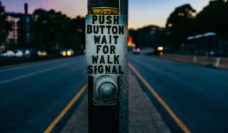We have long been fascinated with airplanes with songs like “Leaving on a Jet Plane” and “Airplanes,” and movies like Airplane!, Planes, and Snakes on a Plane. And from the children’s poem (author unknown):
“The airplane has great big wings
Its propeller spins around and sings…
Over our town.”
For towns below flight paths, the noise (singing) of the airplane is a major source of complaints and is the focus of our research.
Noise is defined as unwanted sound, and sound is defined as vibrations that are picked up by our ears. Sounds from aircraft are typically considered unwanted by communities, so we use the terms noise and sound here synonymously. The US Federal Aviation Administration (FAA) defines significant aircraft noise as Day-Night Average Sound Level (DNL) greater than 65 decibels, a level based on residential annoyance without consideration of health implications (FAA Order 1050.1F).
Emerging literature, mainly from Europe, has ignited concerns beyond annoyance to possible health effects of transportation noise. These studies were summarized in a World Health Organization European Union publication on the burden of disease from environmental noise and later a 2018 update of these noise guidelines. Both documents noted health effects at levels below 65 decibels DNL.
Results from our research will provide some key US-based study outcomes that can be used to influence our national aviation noise policy.
In the US, there is interest in evaluating the health implications of aircraft noise, to determine levels that mitigate negative impacts on human health. However, FAA requires a “significant body of scientific support” applicable to the US, to inform policy and regulations. In other words, evidence from Europe is not considered sufficient. Yet, little research has investigated the relationship between aviation noise and health here resulting from historical lack of attention and a dearth of relevant exposure and outcome data.
In 2013, my colleagues and I were among the first to publish a national study on aircraft noise and cardiovascular health. We found increased risk of cardiovascular hospital admissions with increased aircraft noise exposure, albeit in a study with limited individual data on risk factors. We were subsequently part of a workshop convened by the Volpe National Transportation Systems Center (Volpe) on behalf of FAA to determine next steps for US research on aviation noise and health. The workshop resulted in a review paper including recommendations highlighting the importance of:
- Specifying research goals, whether to determine burden of disease or understand the mechanisms of noise-disease relationships.
- Selecting appropriate measures of effect and exposure and exploring novel measures including “real-time monitors”.
- Determining characteristics of the built environment and populations surrounding airports.
- Leveraging existing data and resources in well-characterized cohorts.
- Estimating other sources of community noise, including other transportation noise.
Within our current research, we are addressing many of these recommendations. I currently lead two research projects investigating the effects of noise on cardiovascular outcomes such as blood pressure and incident cardiovascular disease. These intermediate measures will help to inform questions about mechanisms. These projects leverage well-characterized cohorts such as the Women’s Health Initiative and companion studies, the Nurses’ Health Study and the Health Professional Follow-up Study. Through FAA and Volpe, we have noise data for 90 US airports from 1995 to 2015 in five-year intervals, which are being linked to participants’ geocoded addresses and individual-level data collected over time. We are also assessing road-traffic noise exposure around some of the 90 airports, and evaluating sociodemographic and segregation patterns around airports. Results from our research will provide some key US-based study outcomes that can be used to influence our national aviation noise policy.
Photo by Efe Kurnaz on Unsplash














